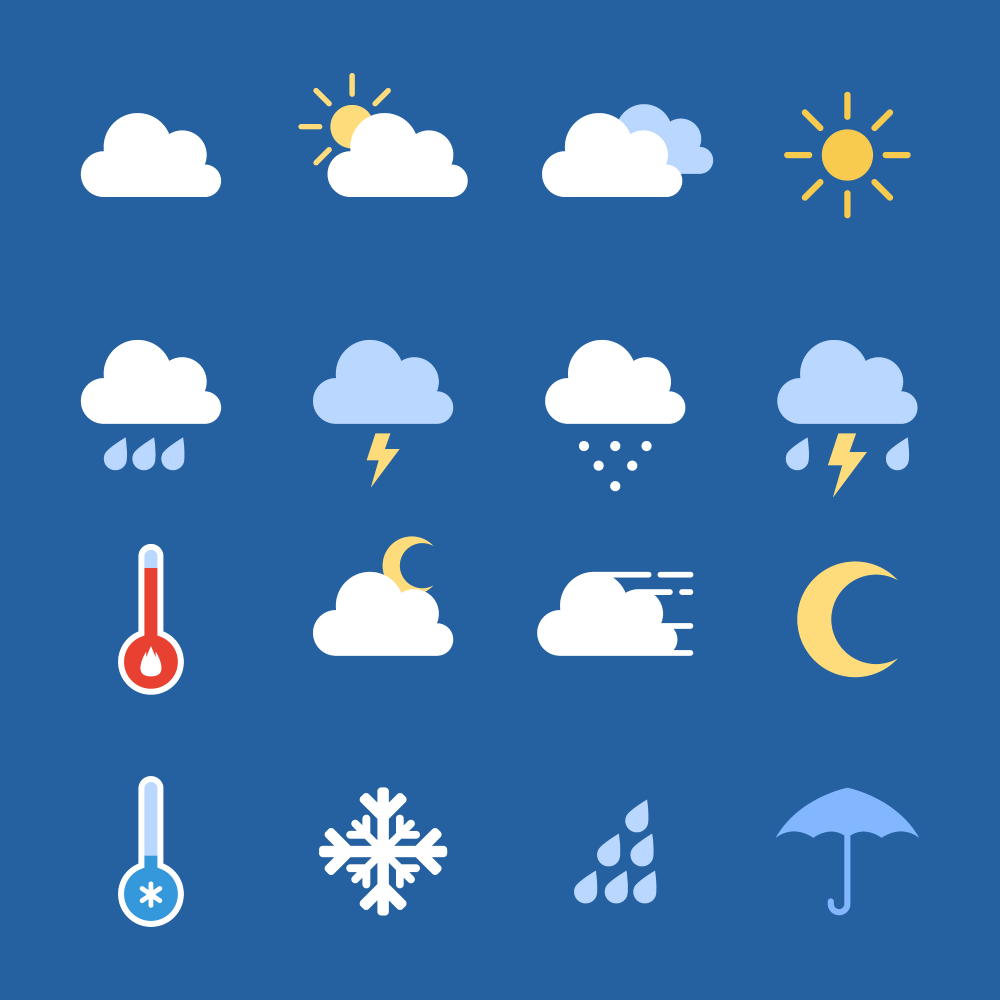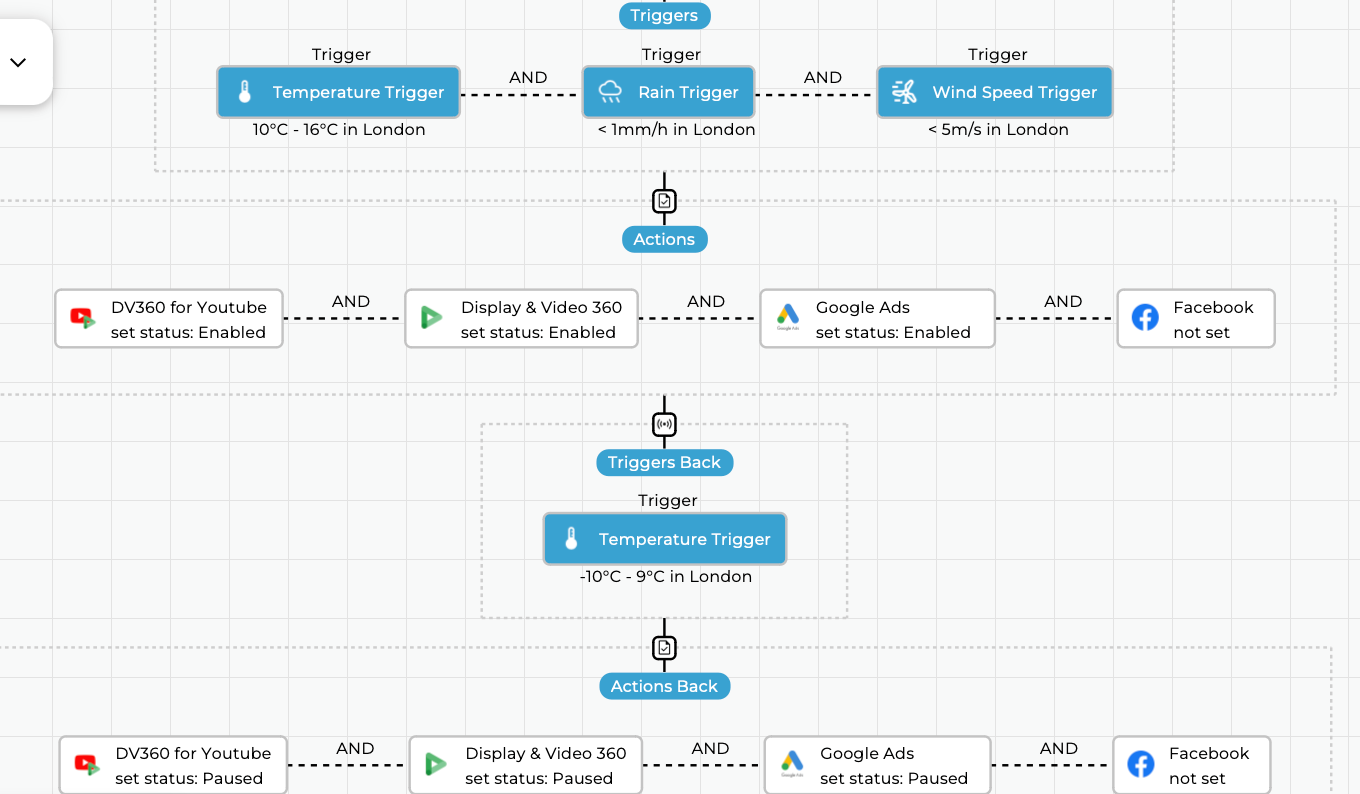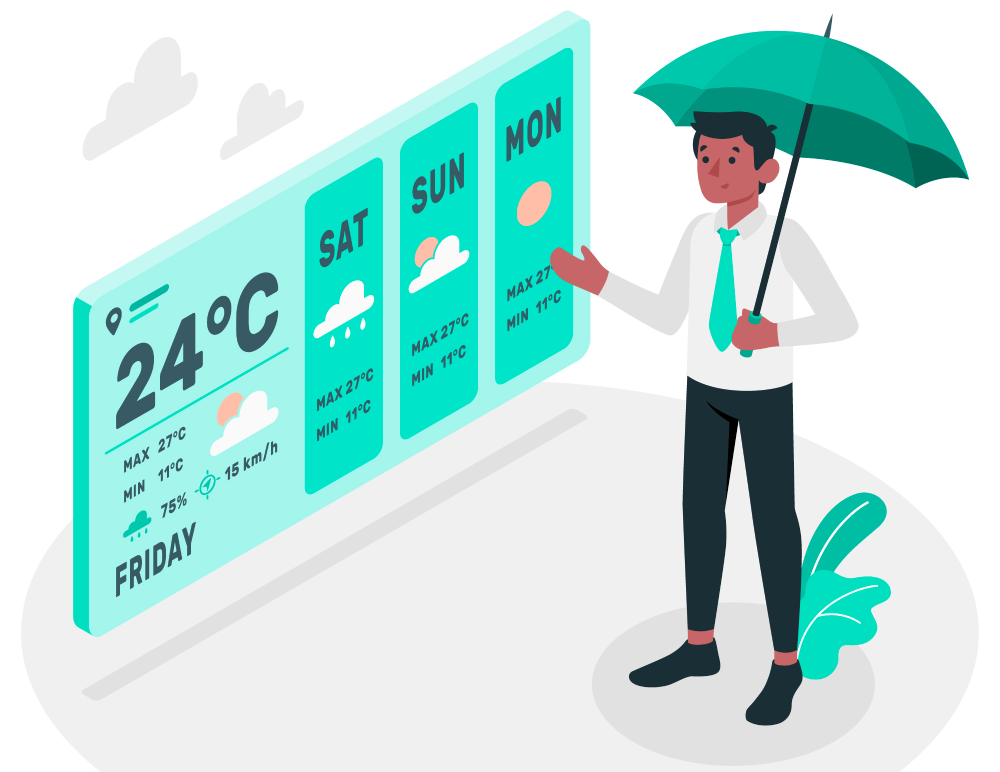January 12, 2024
by Bartosz Salamon
Share
Leveraging real-time meteorological data, weather-based targeting is revolutionizing how businesses engage with their audience in the digital marketing realm. This strategy enables advertisers to customize campaigns to the current weather, significantly increasing their relevance and impact. As a vital tool in the arsenal of modern marketing, it not only elevates consumer interaction but also paves the way for innovative advertising approaches.
A study analyzing over 6 million transactions in China’s convenience stores reveals weather’s significant impact on retail. Rain increases purchases of higher-priced items, while warmer temperatures lead to buying more but lower-priced products. Additionally, sunny and rainy weather boosts sales, whereas poor air quality and temperature variations show distinct effects on different product categories.
Understanding Weather-Based Targeting

Weather-Based Targeting in Digital Marketing
Weather-based targeting is a strategic approach in digital marketing where advertising is customized based on real-time weather conditions. This innovative method allows businesses to align their marketing messages with the current environment, enhancing the relevance and impact of their campaigns.
Application Across Various Platforms
- Display and Video Ads: By integrating weather data, display and video ads (DV360, Criteo, The Trade Desk, Xandr, Amazon Ads) can be dynamically adapted to show content that resonates with the current weather, such as promoting umbrellas during rain or sunglasses on sunny days.
- Social Media Marketing: Social platforms (Facebook, Instagram, TikTok) offer immense potential for weather-based targeting, enabling brands to engage with users through weather-relevant content, boosting interaction and relevance.
- Search Engine Marketing: Weather-based targeting can influence search engine ads (Google, Apple), tailoring content to weather conditions, thus improving the likelihood of clicks and conversions based on user context and environment.
Incorporating weather-based targeting into these platforms can significantly elevate a brand’s marketing strategy. Making it more adaptive, responsive, and aligned with consumer needs and preferences.
Implementing Weather-Based Targeting in Your Strategy
Integrating weather-based targeting into your marketing strategy can be both impactful and straightforward, especially with platforms like AdsLinkers.
Ease of Integration with AdsLinkers
Implementing weather-based targeting through AdsLinkers is designed to be quick and user-friendly, often requiring as few as three clicks. This simplicity stems from our commitment to incorporating marketing automation best practices, ensuring a seamless and efficient experience for users.
Data Safety
While prioritizing ease of use, AdsLinkers also takes data safety and compliance very seriously. Adhering to GDPR and other data protection standards, we ensure that your weather-based marketing strategies respect privacy concerns and maintain the highest level of data security.
This combination of efficiency and security in AdsLinkers makes it an ideal choice for businesses looking to adopt weather-based targeting in their digital marketing campaigns.

Weather-Based Targeting Case Studies
Exploring real-world examples provides valuable insights into the effectiveness of weather-based targeting. In this section, we look at several case studies highlighting how different industries have successfully implemented this strategy.
Retail Industry Success
A major retail chain implemented weather-based targeting to promote seasonal products, resulting in a significant increase in sales during specific weather conditions, showcasing the direct impact of tailored advertising.
Travel and Tourism Boost
A travel agency used weather-based ads to promote sunny destination packages during cold spells in target regions, leading to a noticeable rise in bookings and customer engagement.
Automotive Sector Adaptation
An oil manufacturer leveraged weather data to advertise their cold-weather oils for extreme conditions, enhancing brand reliability and boosting sales during key weather events.
FMCG Company
A BBQ food manufacturer experienced a notable increase in sales correlating with weather conditions, specifically when the temperature rose above 20 degrees Celsius and during sunny days. By implementing weather-based targeting in their marketing strategy, they could precisely time their promotions and advertisements to coincide with these favorable weather conditions. This approach led to a higher engagement rate with potential customers, who were more inclined to purchase BBQ products during warm, sunny weather.
Conclusions
In conclusion, weather-based targeting stands as a potent tool in digital marketing, capable of significantly enhancing campaign relevance and effectiveness. By aligning marketing strategies with real-time weather conditions, businesses can create more engaging and contextually relevant campaigns. Platforms like AdsLinkers simplify this integration, ensuring both efficiency and compliance with data safety standards. The success stories across various industries, from retail to automotive, further underscore the versatility and effectiveness of weather-based targeting. This approach not only fosters better consumer engagement but also opens avenues for innovative marketing strategies in a dynamic digital landscape.







